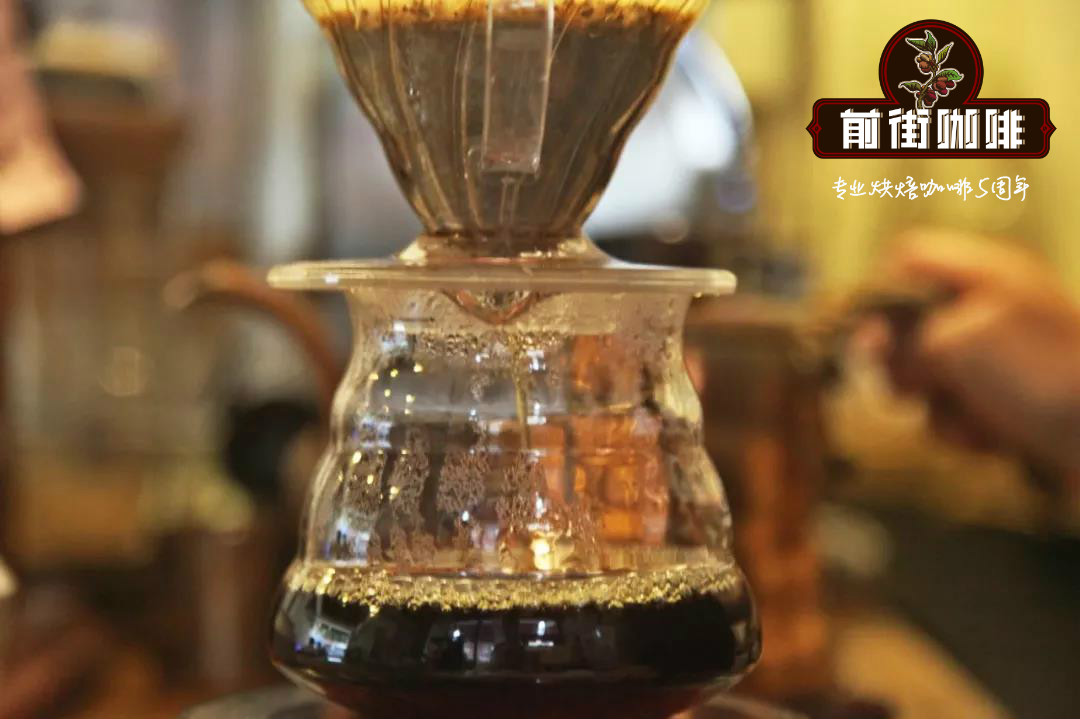How to distinguish between espresso and individual coffee?

I believe that when many coffee rookies first entered the coffee shop, they looked confused in the face of the menu written on the blackboard. I remember that the editor had just stepped into the coffee shop to taste the first cup of coffee in my life. Anyway, I was confused. I was confused. I only know that I listened with a confused face and asked a confused question, and the whole process was confused.
What is a single cup of coffee?
Single cup of coffee
Individual coffee is made from a single coffee bean produced in the country of origin and is a pure coffee without milk or sugar when drinking. Individual coffee has strong characteristics, special taste, or fresh and soft, or mellow smooth, high cost, so the price is more expensive.
Individual coffee has Blue Mountain Coffee, Brazilian Coffee, Colombian Coffee and so on, all of which are named after the origin of coffee beans. Mocha coffee and charcoal coffee are also individual products, but they have special names: mocha is a port in Yemen, and the coffee produced in this port is called mocha, but these coffees may come from different places of origin, so each batch of mocha beans tastes different.
Common categories
(1) Blue Mountain Coffee: from Jamaica. Pure Jamaican Blue Mountain Coffee perfectly combines the unique sour, bitter, sweet and mellow flavors of coffee. The aroma is very rich, mellow and smooth, with long-lasting fruit flavor, forming a strong and attractive elegance, which is unmatched by other coffee. It can be said to be the best coffee.
(2) Manning Coffee: produced in Indonesia's Sumatra Islands, full of grains, with a very strong flavor, spicy bitterness, people who especially like it will indulge in its bitterness. At the same time, it also has the taste of syrup and chocolate, while the sour taste is not prominent, but it has a strong mellowness, which is a favorite variety in Germany, and coffee lovers mostly drink it on their own. It is also an indispensable breed of mixed coffee. [1]
(3) mocha coffee: produced in Ethiopia, the beans are small and fragrant, its sour and alcoholic taste is strong, slightly alcoholic, spicy, moderate sweetness and special flavor. It is a well-known high-quality coffee, usually drunk individually. [1]
(4) Brazilian coffee: there are many kinds of coffee, most of which are moderately acidic, its sweet, bitter and mellow tastes are neutral, the concentration is moderate, and the taste is smooth and special. It is known as the backbone of coffee and is also a very good blending bean. [1]
Coffee beans
(5) Colombian coffee: produced in Colombia, roasted coffee beans release a sweet fragrance, with sweet in acid and medium in bitterness, moderate concentration and long-lasting fruit aroma. It is very nutritious, highly balanced and sometimes nutty. Because of the appropriate concentration, it is also used in high-grade mixed coffee. [1]
(6) Kenyan coffee: aromatic, full-bodied, balanced and delicious acidity, excellent fruit flavor, rich and perfect taste. It is one of the most popular varieties in the industry. [1]
(7) Costa Rican coffee: excellent flavor, smooth, strong acidity, high grade, with attractive flavor. [1]
(8) Java Coffee: produced in Java, Indonesia, full-grained, spicy, relatively low acidity, delicate taste, good balance, is a delicate aromatic coffee. [1]
(9) Kona Coffee: from the Kona region of Hawaii, it is a rare species that can only be grown on volcanic slopes. Taste strong, mellow, and slightly with a kind of wine aroma, the flavor is very special. The selected Kona coffee has a moderate sour taste and a gentle and full-bodied taste, as well as a unique mellow flavor. As the output is decreasing, the price is catching up with Blue Mountain Coffee.
(10) Guatemalan coffee: found in Antigua, which has fertile volcanic soil, it is one of the most famous coffee varieties in the coffee industry. The fertile volcanic soil creates a world-famous soft, mellow taste with a hint of tropical fruit. Rich taste, perfect coordination, plus a trace of smoke, more emphasis on its antiquity and mystery. Many coffee experts have commented that Guatemalan coffee is the best kind of coffee in Central and South America.
(11) Kilimanjaro Coffee: Kilimanjaro from Tanzania. A variety of coffee without acid, with a strong taste and is famous for its duet taste. Exquisite coffee elegant guest, want to feel exotic flavor, boil your taste. Tasting Kilimanjaro coffee is the best choice, the aroma and taste are enough to make the first-time coffee drinkers feel the endless taste of duet.
(12) Cubita: from Crystal Mountain, Cuba. Crystal Mountain is famous for its mellow taste and is adjacent to the Blue Mountains of Jamaica. It is a special coffee bean among the island beans, which is known as the unique Caribbean flavor coffee.
(13) charcoal roasted coffee: it is named after the Japanese who first roasted coffee beans with charcoal. This kind of coffee does have a charcoal-burning taste, but it will not be very strong. It retains the original taste of the coffee and has a pure taste, which may be related to the light eating habits of the Japanese.
14) Italian coffee: it has a strong aroma and strong bitter taste, and a thin layer of coffee oil appears on the surface of the coffee, which is the source of the attractive aroma of Italian coffee. Suitable for those who pursue a strong sense of taste.
World Coffee Map
Proportion
(1) Acid: 30% in Colombia, 30% in Brazil, 20% in Guatemala, 20% in Mocha
(2) bitter: 30% in Colombia, 30% in Brazil, 20% in Kilimanjaro, 20% in Robusta.
(3) thick: Colombia 40%, Guatemala 20%, Mantenin 20%, Brazil 20%
(4) soft: 40% in Colombia, 30% in Brazil, 20% in Mocha, 10% in Robsta
What is espresso?
Italian coffee (Espresso) is a beverage made by forcing near-boiling high-pressure water through coffee ground into fine powder. Espresso coffee is generally thicker than other methods and contains higher concentrations of suspended solids and dissolved solids, such as coffee fat on the surface (crema, a cream foam). Because of its pressurized production process, espresso has a strong taste and a very high concentration of chemicals. It is often used as a base for other drinks, such as latte, cappuccino, macchiato, mocha and American coffee. Of course, there are also people who like to drink pure espresso to make people feel like an explosion. Italian espresso coffee contains more caffeine per unit volume than other coffee drinks, but because it is smaller per serving and the contact time between hot water and coffee powder is very short, usually only about 20 to 30 seconds, so the total caffeine content is lower. Although the actual caffeine content of coffee drinks is affected by volume, source of beans, roasting methods and other factors, a "typical" Italian espresso coffee contains about 80 milligrams of caffeine, while a dripping coffee contains 95 to 200 milligrams of caffeine.
Espresso-based beverage
In addition to drinking alone, espresso is often mixed with other drinks, the most common of which are milk (which can be steam-heated, wet (micro-foam) or dry) and water. The most common milk-based espresso drinks are sorted by size, including: macchiato, cappuccino, plain white coffee (Flat white), and latte. Espresso and water are mixed to make American coffee and long black coffee (long black). Other drinks include red-eye coffee (red eye) and latte macchiato. Cortado and Gal ã o are made from foam-free milk heated by steam.
Important Notice :
前街咖啡 FrontStreet Coffee has moved to new addredd:
FrontStreet Coffee Address: 315,Donghua East Road,GuangZhou
Tel:020 38364473
- Prev

Is hanging-ear coffee instant coffee? how much water does it take to brew it? how long does it take to make it?
Professional coffee knowledge exchange more coffee bean information Please follow the coffee workshop (Wechat official account cafe_style) there are many ways to drink coffee, from instant coffee to hanging-ear coffee to a cup of coffee in a cafe to do-it-yourself freshly made coffee, and the more you know about coffee, the more advanced it is, and the hanging-ear coffee among them combines the two advantages of low cost and hand-made fun.
- Next

How much caffeine does a cup of coffee contain? Does decaf taste good?
How much caffeine does a cup of coffee contain? Does decaf coffee taste good? In addition to the variety of coffee beans, the amount of caffeine in a cup of coffee mainly depends on the baking time and extraction time of coffee beans. The way to coffee, in this, as long as you know how much caffeine is. Varieties of coffee beans: Arabica beans vs. Tanbusta bean
Related
- Beginners will see the "Coffee pull flower" guide!
- What is the difference between ice blog purified milk and ordinary milk coffee?
- Why is the Philippines the largest producer of crops in Liberia?
- For coffee extraction, should the fine powder be retained?
- How does extracted espresso fill pressed powder? How much strength does it take to press the powder?
- How to make jasmine cold extract coffee? Is the jasmine + latte good?
- Will this little toy really make the coffee taste better? How does Lily Drip affect coffee extraction?
- Will the action of slapping the filter cup also affect coffee extraction?
- What's the difference between powder-to-water ratio and powder-to-liquid ratio?
- What is the Ethiopian local species? What does it have to do with Heirloom native species?

